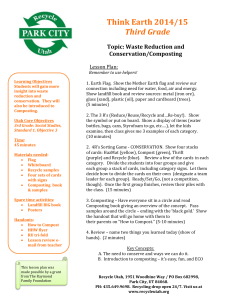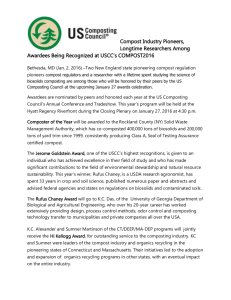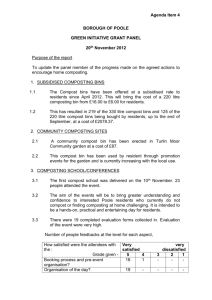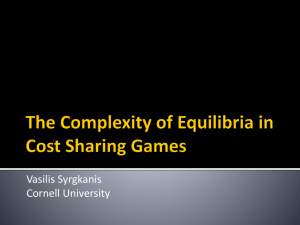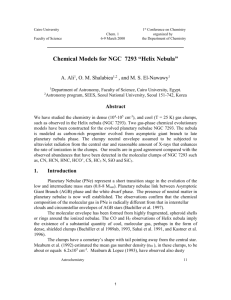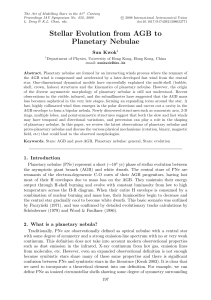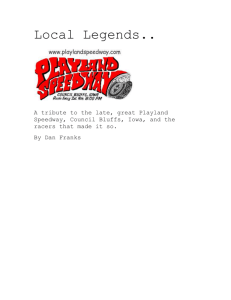Handout
advertisement
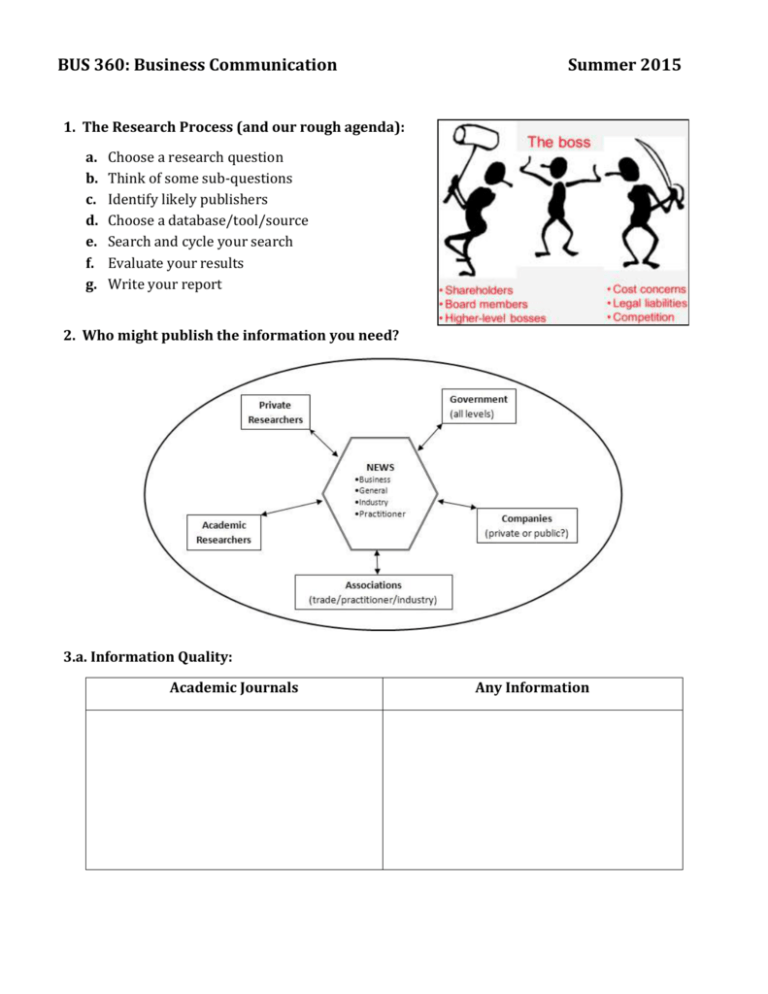
BUS 360: Business Communication Summer 2015 1. The Research Process (and our rough agenda): a. b. c. d. e. f. g. Choose a research question Think of some sub-questions Identify likely publishers Choose a database/tool/source Search and cycle your search Evaluate your results Write your report 2. Who might publish the information you need? 3.a. Information Quality: Academic Journals Any Information 3.b. What do you think of the quality (and relevance) of the following article excerpts, especially the bolded parts? Also, do these articles give you clues about places to search or other subtopics to search for? i. No Green Bin galore, but Stat Can shows jump. Solid Waste & Recycling. 16 July 2013: [http://www.solidwastemag.com/environment/no-green-bin-galore-but-stat-can-showsjump/1002470864] Sixty-one per cent of Canadians are composting their kitchen or yard waste, up 38 per cent over 1994 levels, according to a new Statistics Canada (Stat Can) survey. The July 10, 2013 survey, Composting by Households in Canada, gives a breakdown of how province, income level and dwelling type affected composting levels in 2011. The survey also explores some of the reasons why certain Canadians don’t compost. [...] More than 50 per cent of Canadians in single and detached homes are composters, while only 22 per cent of apartment residents compost, according to the survey. Income levels also play a role, the survey notes. The greater the income, the greater likelihood the household composts. Composting rates were found to be the highest where Canadians earned more than $150,000, and at their lowest where household incomes were less than $20,000. Some of the reasons for Canadians not composting included not having a compost bin or access to a municipal composting program. Other reasons offered were the possibility that wildlife or vermin might be attracted to the compost bin, that composting was time consuming and took up too much space, and being unsure of what materials are in fact compostable. However, 10 per cent of Canadian households reported having access to a municipal composting or organics collection program for kitchen or yard waste, but did not use it. Note: Follow-up searches: tinyurl.com/n8one99 & http://www.solidwastemag.com/digital-archives/ ii. Chan, K.. (2012). Opinion: Metro Vancouver deserves a better Playland and PNE. [Web log: Vancity Buzz]. [http://www.vancitybuzz.com/2012/09/special-vancouver-deserves-a-better-playland-andpne] [...] The scope and size of the Fair has been downsized enormously since the 1990s when the City of Vancouver decided to demolish more than half of the PNE’s fairground sites and buildings to make way for green spaces. Where it stands today, in its current state, the PNE is merely a shell of its former self. It no longer has the same flair nor fun, and is significantly smaller than what it had been even before the mid1990s. And yet, this has happened when demand has continued to increase for a much better and larger PNE Fair and Playland amusement park. This has not happened, and future master plans for Hastings Park could exacerbate the decline of the PNE. Simply put, Hastings Park is an extremely small and limited space of land. There is not enough space at Hastings Park for both a grand urban green park (which the City of Vancouver and neighbourhood residents greatly desire) and a large-scale and high-quality annual Fair and amusement park (that the entire Metro Vancouver region would enjoy and benefit from). There is only enough room at Hastings Park for either a fantastic green space OR a fantastic PNE and Playland.. [...]


